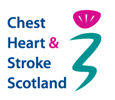Assessment
Pulmonary Rehabilitation: Patient Assessment (video)
- View text alternative
- Patients attending PR undergo a comprehensive assessment looking at:
Diagnosis
- Which respiratory condition or conditions has the patient been diagnosed with.
- Forced Expiratory Volume in one second (FEV1) shows the amount of air a person can forcefully exhale in one second of their forced vital capacity (FVC). This can be helpful in diagnosis.
Exacerbations
- How often do patients have an exacerbation?
- Most recent?
- Able to identify exacerbation?
- Early identification.
Medications
- Respiratory medications and other medications including oxygen – dose / check inhaler technique.
- Vaccinations – influenza and pneumonia.
Smoking history
- Current smoker?
- How long been smoking for, cigarettes/pipe/cigar/ e-cigarette?
- Ex-smoker, when stopped.
- Calculate pack years.
- Referral to smoking cessation services as required.
Social history
- The patient's home circumstances, housing, stairs, mobility and exercise, activity of daily living, occupation.
Exercise capacity
- Field walking tests – ISWT or 6m walk test.
Outcome measures:
- Incremental Shuttle Walk Test (ISWT)
- 6 minute Walk Test (6mWT)
- Endurance Shuttle Walk Test (ESWT)
Leg strength
-
1RM, functional measures e.g. 5Tsts.
Outcome measures:
- Usually quads, can be done with machinery or functionally.
Health status (usually a questionnaire)
- CAT
- St Georges
- KBILD
Outcome measures:
- Using validated questionnaires related to specific respiratory condition, e.g. COPD Assessment Test (CAT), Kings Brief interstitial Lung Disease (KBILD).
Anxiety and depression
- PHQ-4
- PHQ8: As PHQ9 with the 9th item removed. Eight items, each of which is scored 0 to 3, providing a 0 to 24 severity score.
- GAD-7
Outcome measures:
- Using validated questionnaires.
Goal setting
- Joint goal setting with patient, used to guide treatment plan.
Self management
- How much does the patient know about their condition and what is important to them in their daily life when coping with long term respiratory disease?
Important:
- The assessment should be thourough and based on a two way discussion about the patient's lifestyle and symptoms.
- It is important to know what having a long term lung condition means to the patient from their perspective.
- Do they understand their medication?
- What are their goals?
- What are they concerned about regarding their physical and mental health?
- A good assessment results in the patient learning more about their condition and eager to attend rehabilitation classes.
| Additional information | |
|---|---|
Anxiety and depressionPatient Health Questionnaire Screeners:
Health Status |
|




